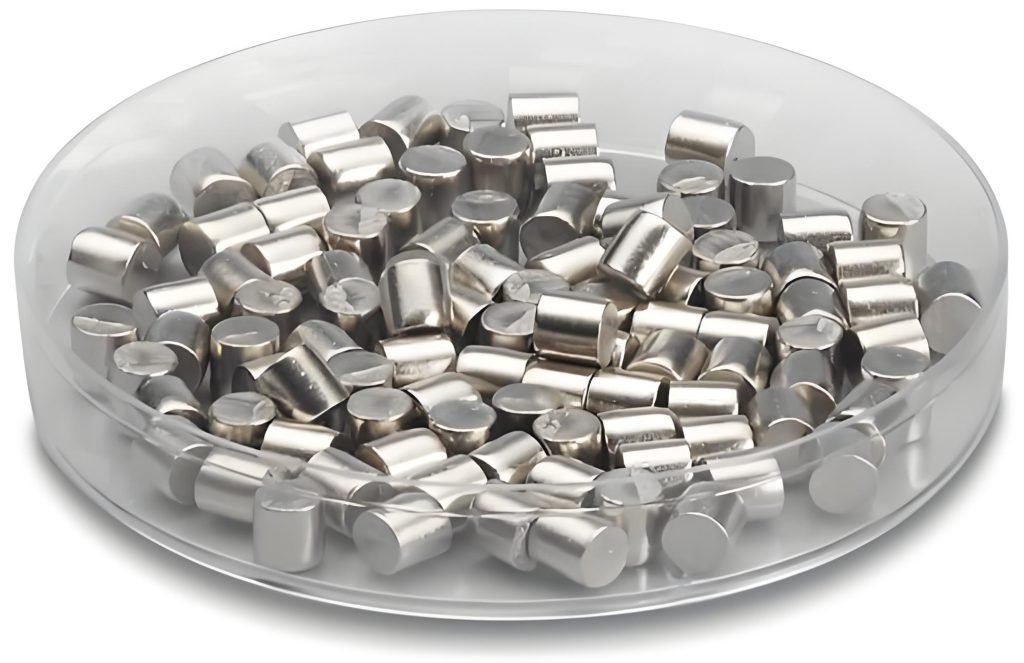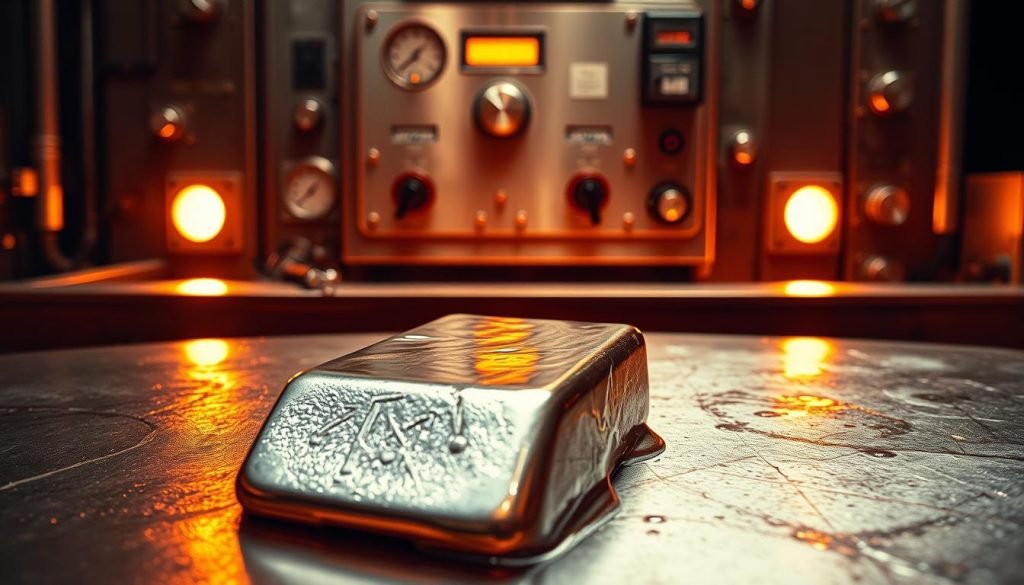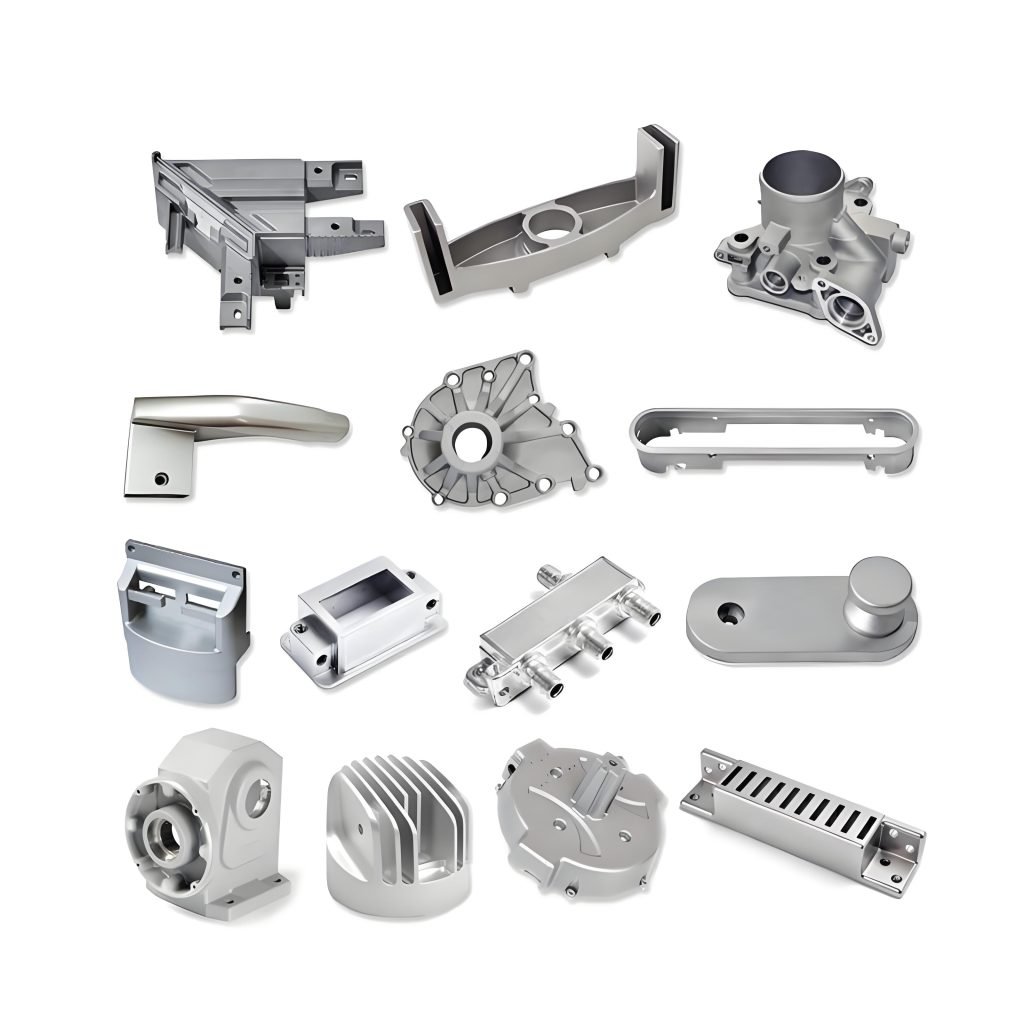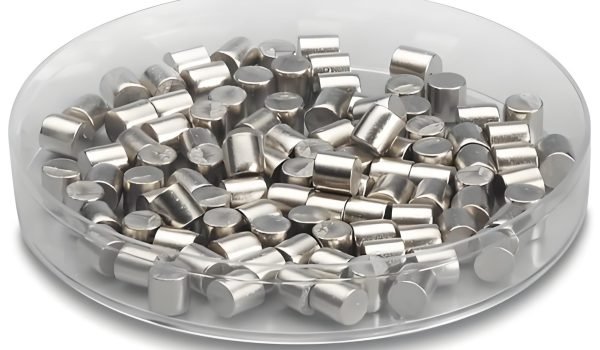Are you aware of the crucial role that zinc’s melting characteristics play in precision manufacturing processes?
Zinc is a versatile metal widely used in various industrial applications due to its unique properties. With a relatively low melting point of 419.5°C (787.1°F), zinc is an ideal material for manufacturing processes such as die casting and galvanization.

Understanding the melting behavior of zinc is essential for producing high-quality products. As a manufacturer, you need to be aware of the importance of zinc’s melting characteristics to ensure optimal results in your production processes.
The Fundamental Properties of Zinc
Understanding zinc’s fundamental properties is crucial for appreciating its role in precision manufacturing. Zinc is a versatile element with unique characteristics that make it valuable in various industrial applications.
Physical and Chemical Characteristics
Zinc is classified as a transition metal with atomic number 30. It is the 24th most abundant element in the Earth’s crust. At room temperature, zinc is brittle but becomes malleable between 100 and 150°C. It has a hexagonal crystal structure and is a fair conductor of electricity. Zinc has a density of 7.14 g/cm³ and forms a protective passivating layer of basic zinc carbonate when exposed to air.
Zinc’s Position Among Metals
Zinc’s properties place it in a unique position among metals. Its reactivity and ability to form alloys make it a valuable material for various manufacturing processes. Compared to other common metals, zinc’s relatively low melting point and corrosion resistance make it particularly suitable for applications such as galvanization and die casting.
Zinc Melting Point: The Essential Facts

The melting point of zinc is a fundamental property that makes it ideal for various industrial applications. You should understand this property to appreciate its significance in manufacturing.
Defining the Melting Point of Zinc
The melting point of zinc is 419.5°C (787.1°F). This temperature is considered relatively low compared to many other metals, making zinc a favorable choice for processes that require melting and casting. The melting point is a critical physical property that determines the usability of zinc in different manufacturing contexts.
Comparison with Other Common Metals
Zinc’s melting point is significantly lower than many common metals. For instance, iron melts at 1538°C (2800°F), which is 1118.5°C higher than zinc. Aluminum melts at 660.3°C (1220.5°F), and copper at 1084.62°C (1984.32°F). This comparison highlights zinc’s advantage in terms of energy requirements and processing equipment.
A detailed comparison of melting points among various metals can be seen in the following metals: Iron (1538°C), Aluminum (660.3°C), Copper (1084.62°C), and Lead (327.5°C). Zinc’s melting point falls between that of lead and aluminum, making it suitable for specific manufacturing processes.
Common Zinc Alloys and Their Melting Points
When it comes to precision manufacturing, understanding the melting points of common zinc alloys is crucial for selecting the right material for your specific needs. Zinc is a critical component in various alloys, most notably brass, which is a combination of zinc and copper.
Brass and Bronze Alloys
Brass alloys, which are combinations of zinc and copper, are widely used in musical instruments, plumbing fittings, and decorative items. The addition of zinc to copper lowers the melting point of the resulting alloy, making it easier to cast and shape. Bronze alloys containing zinc also offer unique properties, differing from traditional bronze in terms of melting behavior and applications.
Zinc Die Casting Alloys
Zinc die casting alloys, such as the ZAMAK series, are formulated specifically for precision manufacturing. These alloys typically contain aluminum, copper, and magnesium in small amounts, which affect their melting behavior and mechanical properties. Understanding the melting ranges and flow characteristics of these alloys is essential for achieving high-quality casts.
By examining the properties and melting points of these common zinc alloys, you can make informed decisions about the best alloy for your manufacturing needs, ensuring optimal performance and efficiency.
Factors That Influence Zinc’s Melting Behavior
The melting behavior of zinc is influenced by several key factors that manufacturing professionals must consider. Understanding these factors is crucial for achieving consistent and predictable results in zinc-based manufacturing operations.
Purity Levels and Their Impact
The purity level of zinc can significantly impact its melting point. Impurities in zinc can either lower or raise the melting point, depending on their nature and concentration. For instance, the presence of lead or cadmium can lower the melting point, while certain other impurities might raise it. Commercial-grade zinc, which may contain trace elements, can exhibit slightly different melting characteristics compared to laboratory-pure zinc.
Environmental Conditions During Melting
Environmental conditions during the melting process also play a crucial role. Factors such as pressure, atmosphere composition, and heating rate can affect zinc’s melting behavior. For example, a controlled atmosphere can prevent oxidation, ensuring a more consistent melting point. Understanding and controlling these environmental conditions is essential for achieving the desired melting behavior in industrial settings.
The Significance of Zinc’s Low Melting Point in Manufacturing
The relatively low melting point of zinc is a significant advantage in various manufacturing applications. Zinc’s melting point of approximately 419.5°C (787.1°F) offers numerous benefits, particularly in terms of energy efficiency and cost-effectiveness.
Energy Efficiency Benefits
Zinc’s low melting point results in significant energy savings during manufacturing processes. Compared to metals with higher melting points, less energy is required to melt zinc, leading to reduced energy consumption and lower production costs. This energy efficiency also translates to a reduced environmental impact, making zinc a more sustainable choice for various industrial applications.
Processing Advantages
The low melting point of zinc provides several processing advantages, including easier handling and simpler equipment requirements. This enables manufacturers to produce complex shapes with greater precision, improving overall product quality. Additionally, zinc’s melting characteristics facilitate faster production cycles, reduced equipment wear, and lower maintenance costs, further enhancing manufacturing efficiency.
Practical Applications in Precision Manufacturing

You can leverage zinc’s advantages in precision manufacturing through its various applications. Zinc’s low melting point makes it an ideal material for processes that require high precision and complex shapes.
Die Casting Applications
Die casting is a significant application of zinc in precision manufacturing. This process involves forcing molten zinc into a mold to create complex shapes with high precision. The result is high-quality components used in various industries, including automotive and electronics.
Galvanization Processes
Another crucial application of zinc is in the galvanization process, where it is applied as a protective coating to steel or iron. The low melting point of zinc allows it to adhere easily to the surface of these metals, providing a robust, corrosion-resistant layer. This process is vital for protecting steel components from corrosion, extending their lifespan, and ensuring the durability of products across various industries.
Common Machining Methods for Zinc
Zinc is a versatile metal that can be machined using various techniques, making it a popular choice in manufacturing. You can utilize different machining methods to produce zinc parts, depending on your specific requirements and production volume.
Die Casting Techniques
Die casting is a popular method for working with zinc, involving the injection of molten zinc into a steel mold under high pressure. This process allows for the production of complex parts with high accuracy and surface finish. You can choose between hot-chamber and cold-chamber die casting processes, each with its own advantages and limitations.
CNC Machining of Zinc
CNC machining is another viable option for zinc parts, especially for prototypes or low-volume production. Zinc’s relatively soft nature makes it easy to machine, but its low melting point requires careful control of cutting speeds to prevent melting from frictional heat. By optimizing cutting parameters and tool selection, you can achieve precision results in your zinc components.
Conclusion: Maximizing Zinc’s Potential in Manufacturing
The unique properties of zinc, particularly its melting point, play a significant role in its versatility and application in modern manufacturing. With a melting point of 419.5°C (787.1°F), zinc offers a relatively low melting point compared to other metals like iron and copper.
This characteristic facilitates efficient processing and cost-effective production, making zinc a valuable element in various industries, including the automotive sector for corrosion-resistant coatings and parts manufacturing.
By understanding and leveraging zinc’s properties, manufacturers can optimize their use of zinc and zinc alloys, leading to improved energy efficiency and product quality. As industries continue to evolve, the demand for zinc is expected to grow, driven by its applications in die casting, galvanization, and beyond.
FAQ
What is the melting point of pure zinc?
The melting point of pure zinc is approximately 787°F (419.5°C), which is considered relatively low compared to other metals.
How does the purity of zinc affect its melting behavior?
The purity level of zinc can significantly impact its melting behavior, with impurities potentially lowering or raising the melting point, depending on the specific contaminants present.
What are some common zinc alloys used in manufacturing?
Common zinc alloys include brass, bronze, and zinc die casting alloys, each with its own unique properties and applications in various industries.
What are the benefits of zinc’s low melting point in manufacturing processes?
Zinc’s relatively low melting point offers energy efficiency benefits and processing advantages, making it an ideal material for die casting and other manufacturing applications.
How is zinc used in galvanization processes?
Zinc is used to protect steel from corrosion through galvanization, a process that involves coating the steel with a layer of zinc to prevent rust and extend its lifespan.
What machining methods are commonly used for zinc?
Die casting and CNC machining are two common methods used to shape and form zinc into various components and parts for different industries.
What are some of the key applications of zinc die casting?
Zinc die casting is used in a variety of applications, including the production of automotive parts, electronic components, and other precision-engineered products.
How does the atomic number of zinc relate to its properties?
Zinc’s atomic number is 30, and its properties, such as its conductivity and corrosion resistance, make it a valuable material in various industrial applications.




